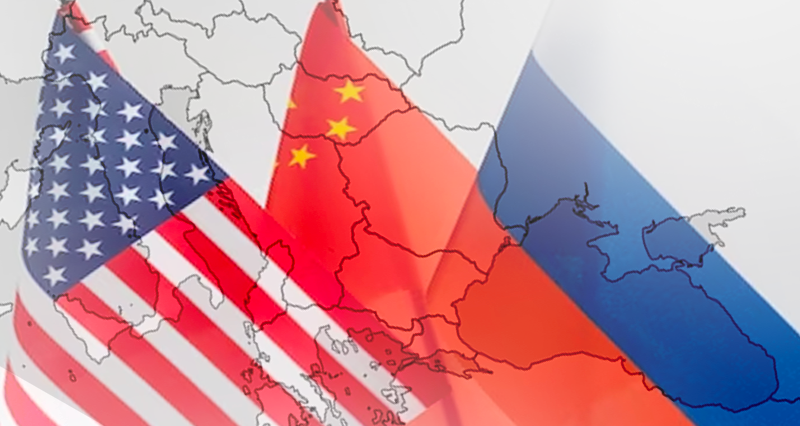The President of China mentioned “changes not seen in 100 years” while his counterpart Putin was seeing him off.
The ongoing US-Russia war in Ukraine, the rising de-dolarization, the bankruptcy of Credit Suisse bank and shaky German banks, riots in European capitals, the revival in Africa, China’s diplomatic breakthrough in West Asia…
Yes, just as Xi Jinping said, the world is going through the changes that have not happened for 100 years.
The establishment is being shaken to its very foundations.
And the US is trying to maintain the given world order by a West-East balance through the war in Ukraine.
The project of using Europe against Russia on the Ukrainian front (which has so far succeeded to a certain extent) is at the core of the US project of West-East balance, in other words Cold War balance.
China’s peace offer to Europe
In such a complex and yet simple process at the same time, China has put forward a “peace plan” to end the war in Ukraine.
Although the 12-point “peace plan” was interpreted as a call for Russia and Ukraine to end the conflict, taken together with the international conjuncture, it is an appeal to Continental Europe to reconsider its relations with Russia, and therefore with the East.
The Anglo-Saxons are sending depleted uranium shells to Ukraine in order to escalate the war simultaneously with China’s “peace plan”, and the King of England’s direct call for war in Germany – the country planned to be the front line against Russia in Europe – confirms our assessment.
The European government officials’ visits to China, most recently French President Macron, following the peace plan proposal, show that the appeal for peace was to Paris and Berlin rather than Kiev, and that it has hit the mark.
The strategy underlying China’s appeal can be summarized as follows:
- Preventing the US strategy of keeping Europe in its sphere of influence by putting the world in a Cold War balance between West and East,
- Involving Europe into the China-centered Belt and Road Initiative,
- Preventing the US from crossing into Asia through Russia, the front gateway of Asia (in such a case, the threat to China would be intensified),
- Making Russia a part of the Belt and Road Initiative,
- And ultimately, entombing the US unipolar world order.
Can Europe break away from the US?
However, implementing this strategy faces the following problematical points:
- Is it possible for Paris and Berlin to break away from the US sphere of influence? (Macron’s statements during his visit to Beijing indicate a willingness to do so). Would the capital structure of Europe and the configuration of its foreign trade allow such a rupture?
- How ready is the supra-state European Union institution, namely Brussels, embodied in the persons of von der Leyen and Josepp Borell, to move away from the USA?
- Peace is not only the fruit of victories but also of compromises and concessions. For example, is there any space for Russia to step back in Ukraine? Or on energy, what kind of approach can Russia take to soften Europe’s policies? Should Russia do that? In short, how far can Russia make concessions to Europe within the framework of this plan?
- Does the Anglo-Saxon front (US and UK) share the same view on China’s proposal? Are there any cracks between them? Might it occur? UK sending depleted uranium shells to Ukraine and King Charles’ Berlin visit indicate that the UK is pursuing an aggressive policy on Russia, even more than the US.
- How could the US respond to such an inclination? In the case of Europe’s rupture, could the US launch a new provocation involving tactical nuclear weapons?
More questions can be raised about this puzzling equation with so many actors.
The trend suggests that China is trying to outmaneuver the US in Ukraine. We will see the US response in the coming days.
In any case, a spring full of changes and then a hot summer awaits us…

















Leave a Reply